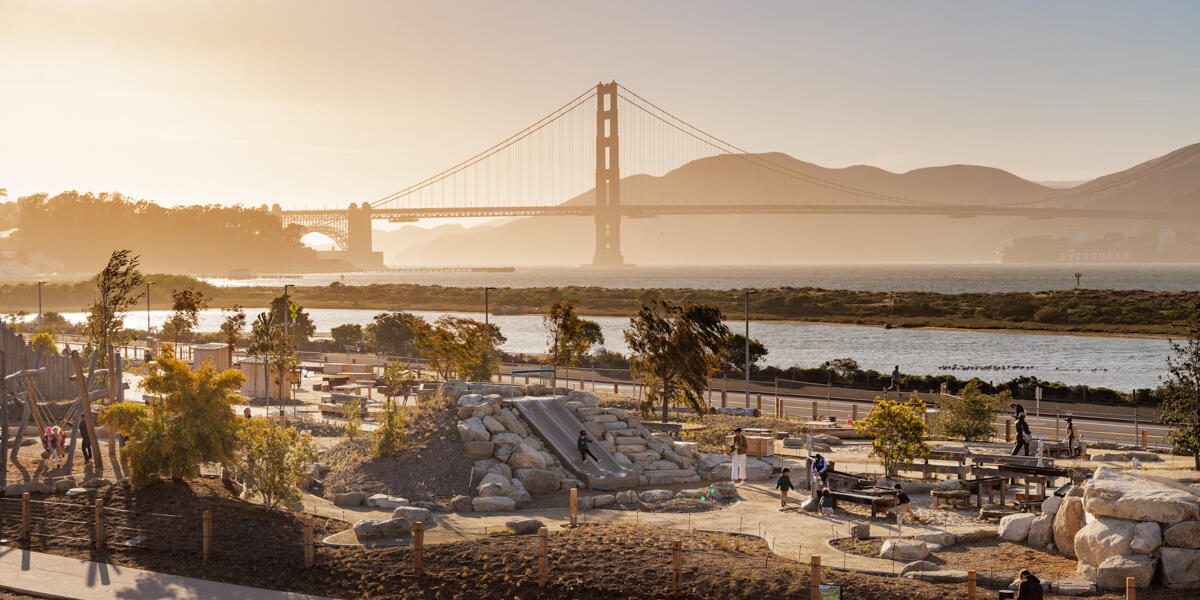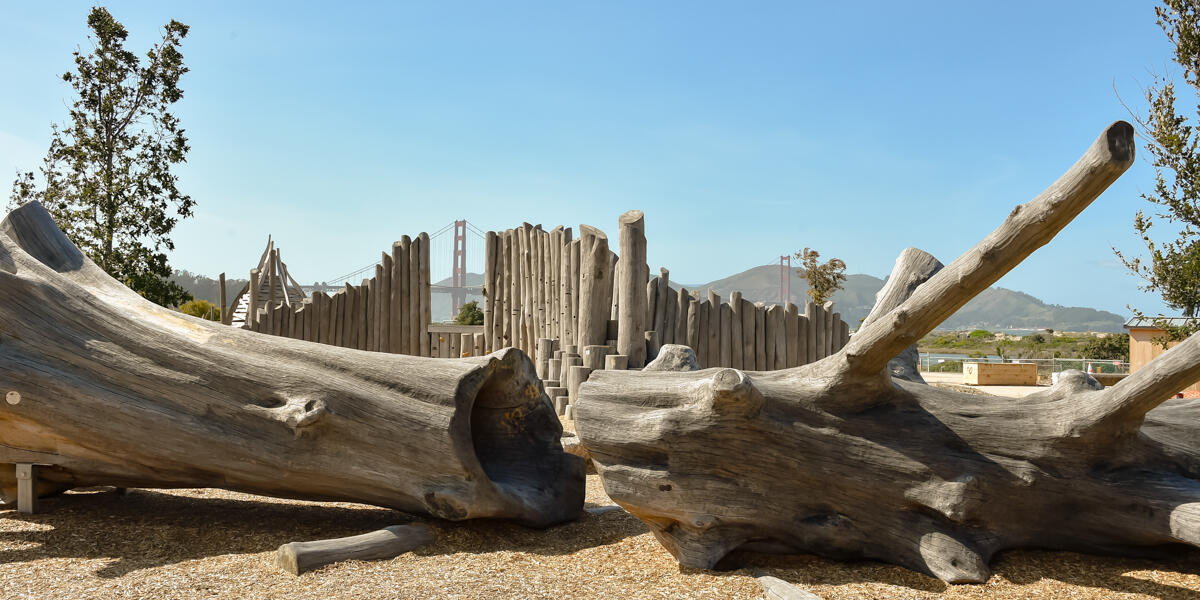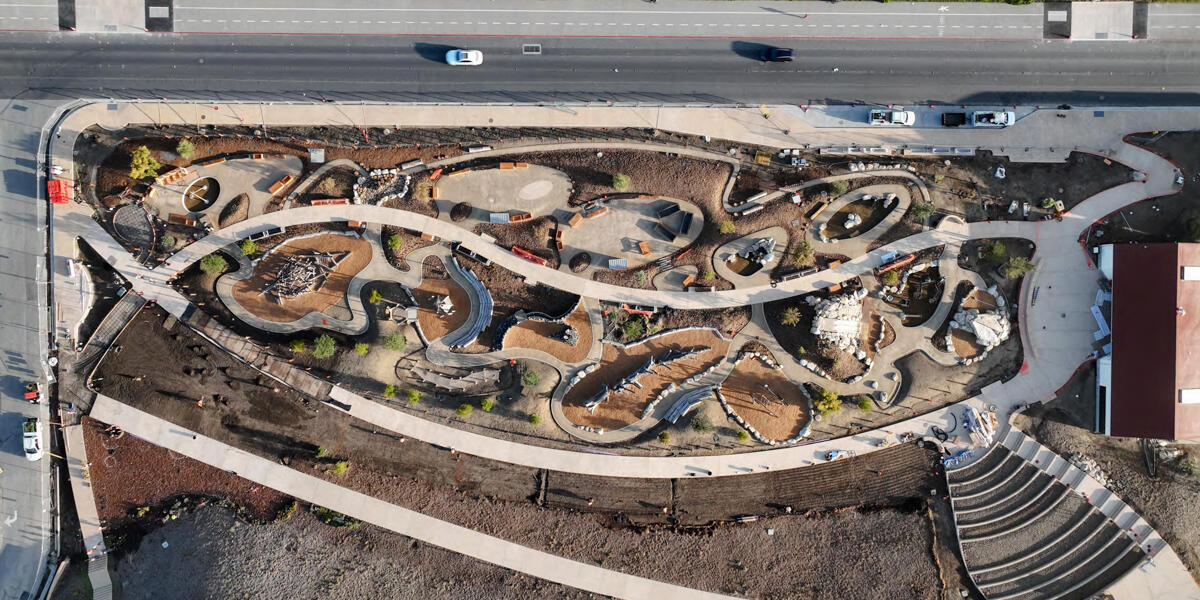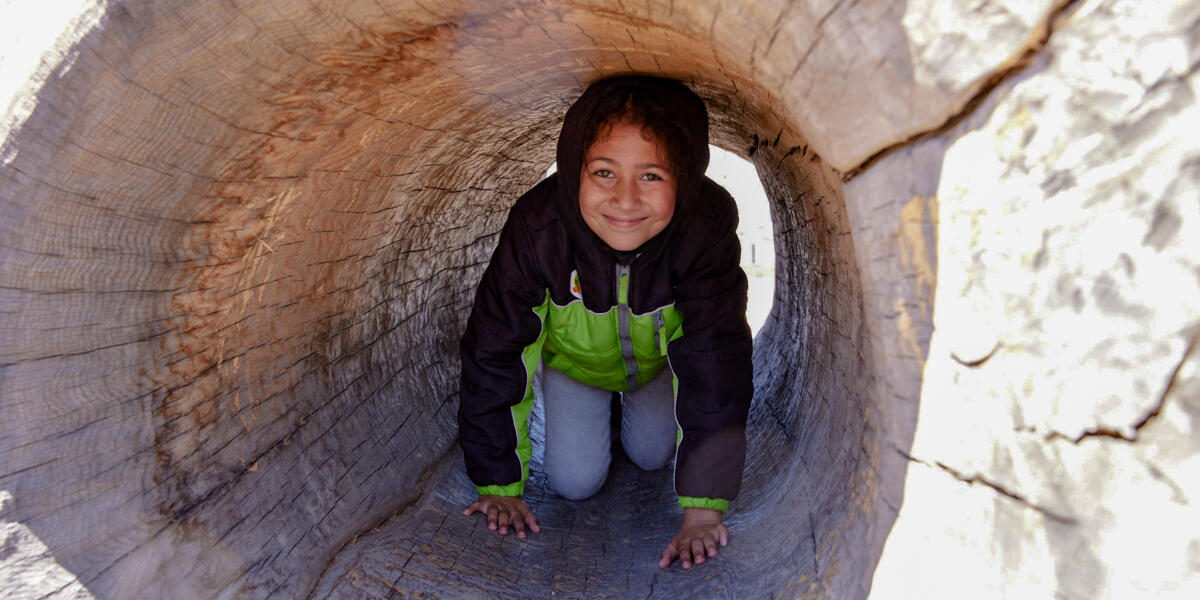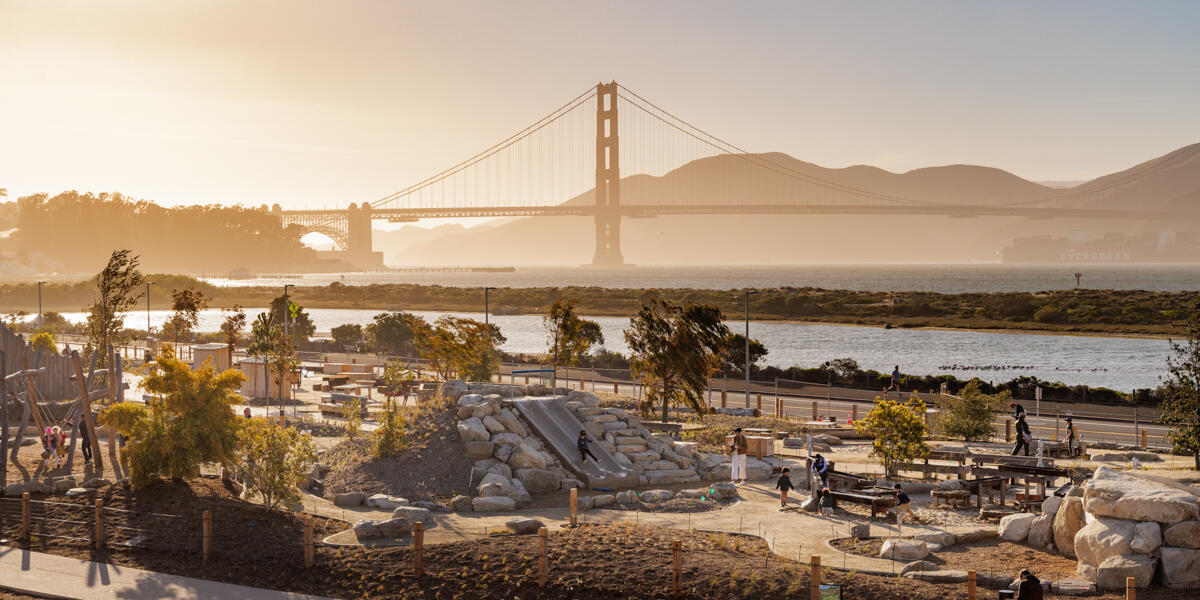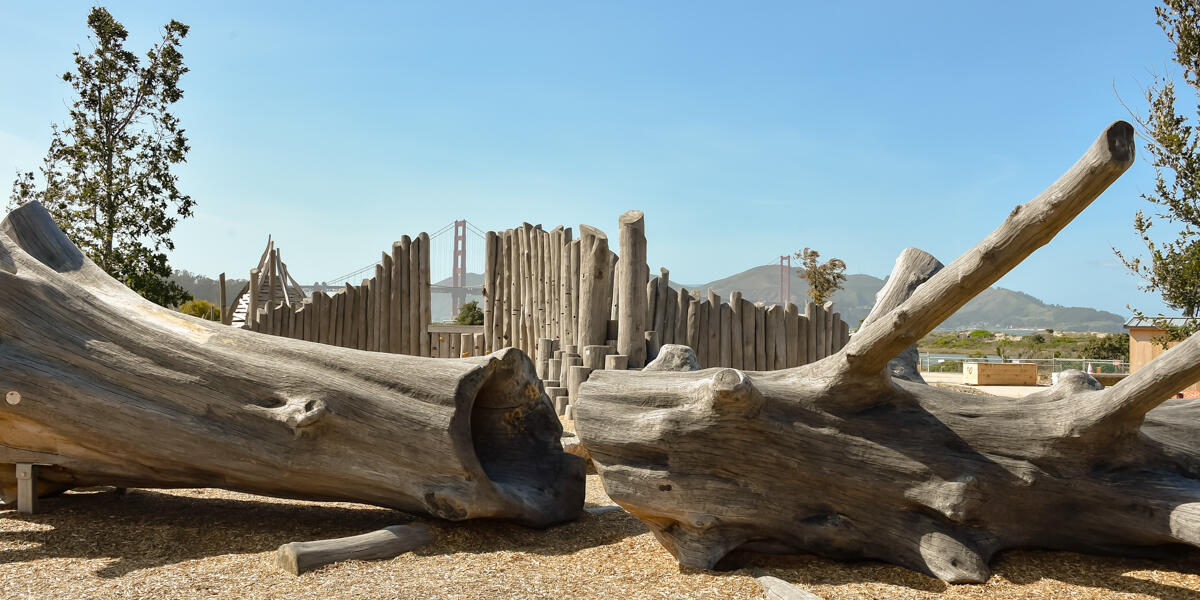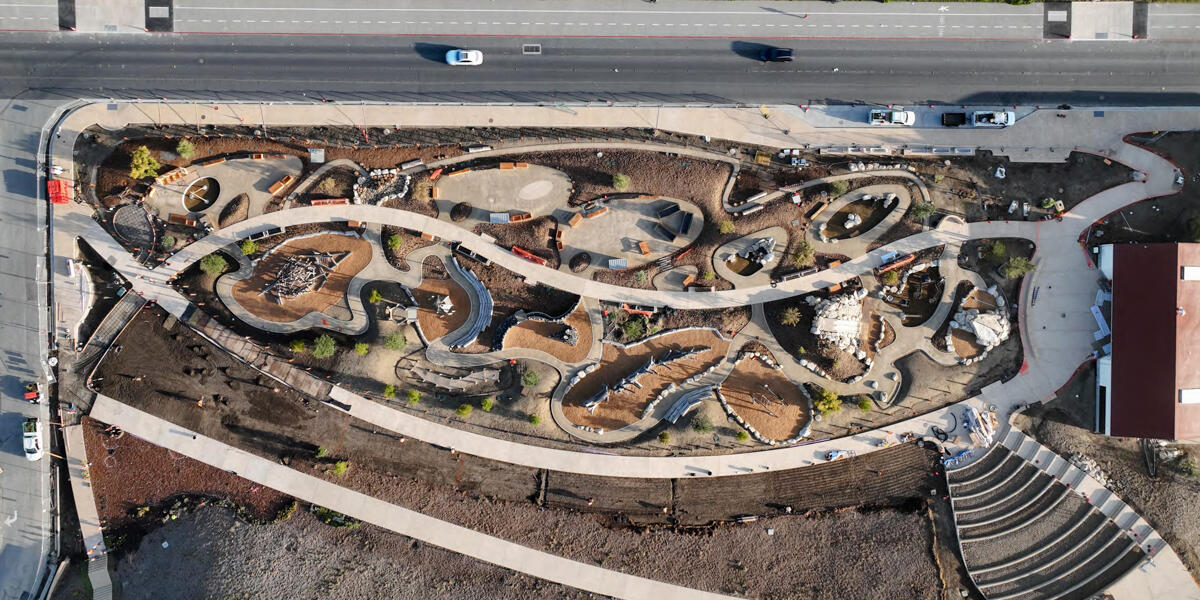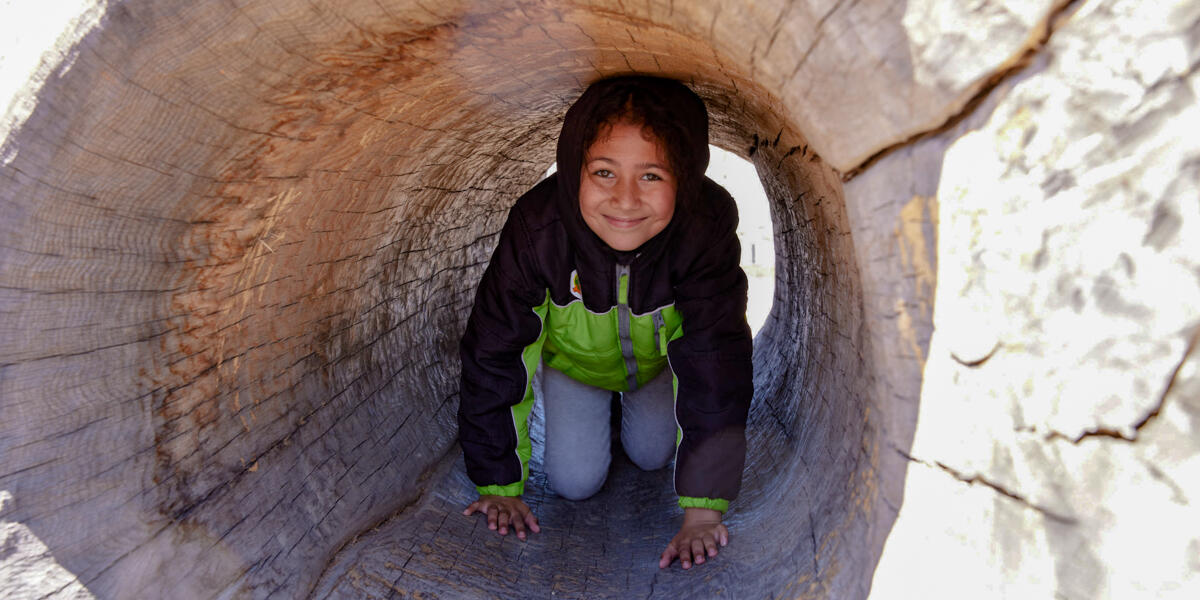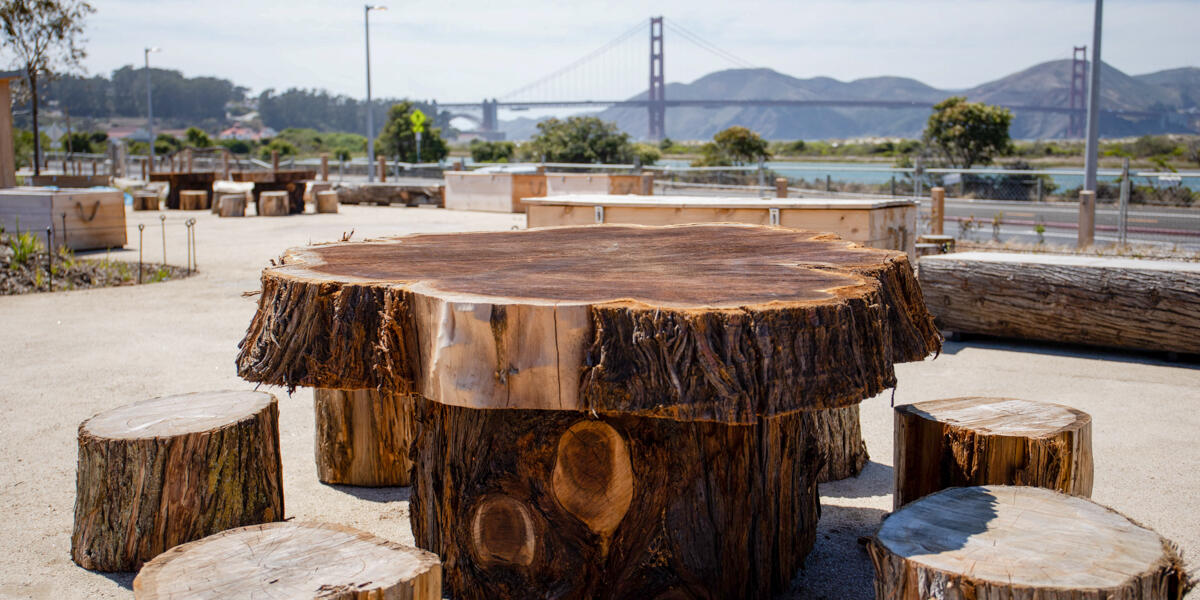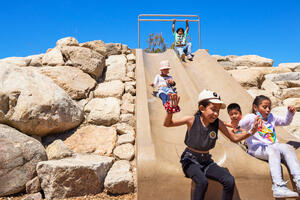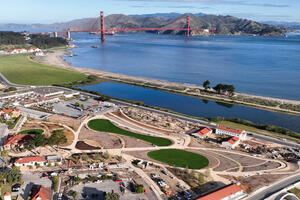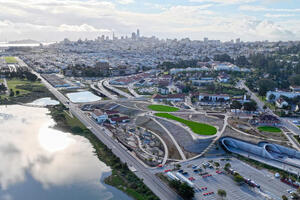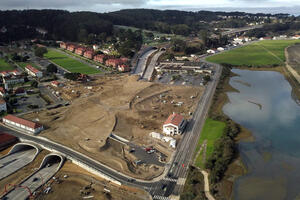Given the opportunity to climb a tree, a child will choose one of countless ways to navigate from limb to limb.
The story of how the Outpost playscape at Presidio Tunnel Tops came together revolves around this concept: When children are immersed in nature, it encourages them to play in a non-prescriptive manner.
When Rania Rayes, landscape architect and Senior Project Manager at the Presidio Trust, first toured the barren patch of dirt that stretched over the top of the Presidio Parkway tunnels, she began to envision what a nature play environment here might look like.
In the earliest phases of concepting and goal setting for the project, a team of artists, pediatricians, scientists, educators, and designers came together to discuss the validity and benefits of nature-based play.
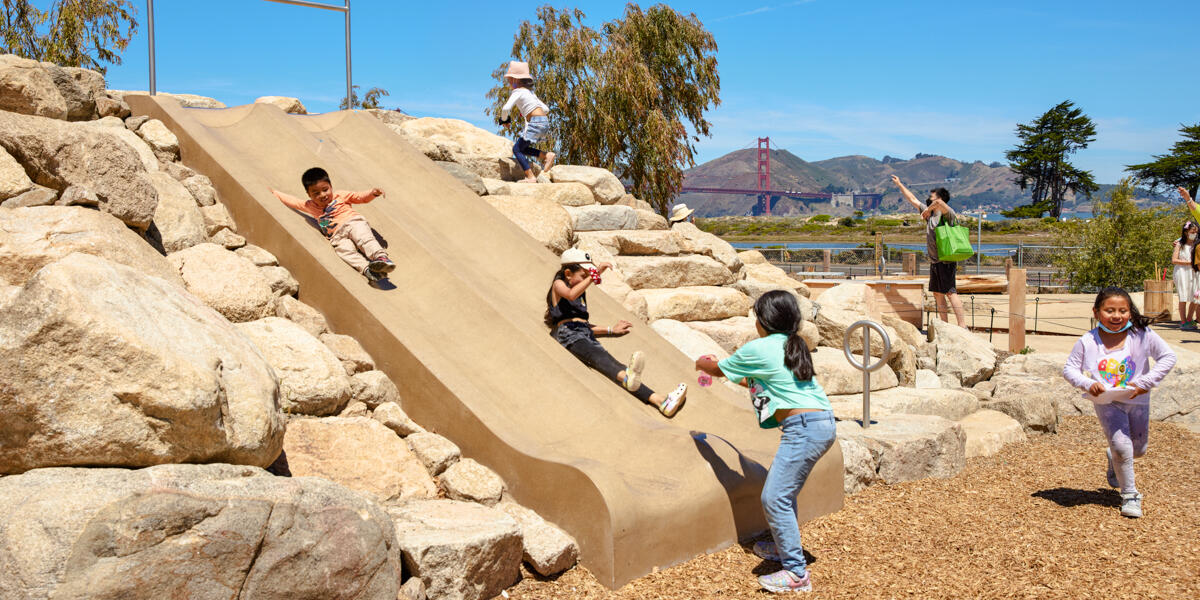
“The big takeaways from this group were that kids learn best through play and non-prescriptive experiences, and that being in nature and taking risks are essential for healthy childhood development,” said Rayes.
Further brainstorming sessions with the Trust, Parks Conservancy, and the National Park Service ended with visions of play features that were deeply rooted in the Presidio’s natural ecosystems, as well as its cultural history. They envisioned a range of experiences—some more self-directed and others with some level of guidance.
Adventure Guides were hired by the Parks Conservancy to provide information, history, and help to anybody who needs it at the Outpost and nearby Field Station. Many of the Adventure Guides came up through Crissy Field Center leadership programs and understand the balance between teaching moments and nature play that's open to interpretation. Deeply knowledgeable about the area, they're there to offer a helping hand, while encouraging kids to forge their own relationships with the space and its surroundings.
The team didn’t have to look very far to find design inspiration for the playscape in nature. Coastal dunes and a marine marsh flanked the site on one side, with the Presidio’s coastal bluffs bordering the other. Creating this project here, in a national park, was a golden opportunity to blur the line between nature and the built environment.
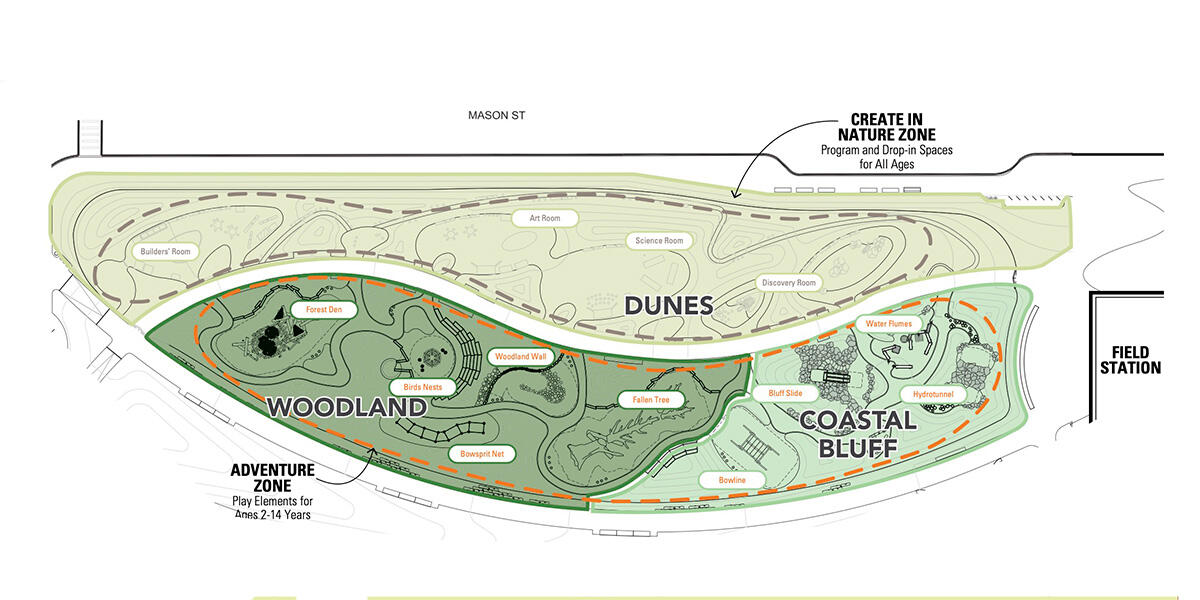
“Because the Army didn’t develop about 10% of the Presidio, it also represents the best remaining bit of pre-[European] contact San Francisco," said Michael Boland, Chief Park Officer for the Presidio Trust. "It’s unbelievable how rich the biodiversity of the Presidio is, with more than 400 native plant species and nearly 300 bird species. Here, we have the opportunity to create a portal to the natural and cultural heritage of the larger Presidio for youth."
Design drafts covered tables at the office of James Corner Field Operations, the project’s design partner. The plans revealed a labyrinth of pathways that would wind through coastal bluff, dune, and woodland habitat themed zones of the playscape. Colorful illustrations depicted play structures designed in the form of birds' nests, a coyote den, and spider webs. One structure called “Bowline” would be built with rope and wood, echoing back to the maritime history of the Presidio, while the water-play feature designs in the playscape were inspired by the water conveyance systems built by the Army.
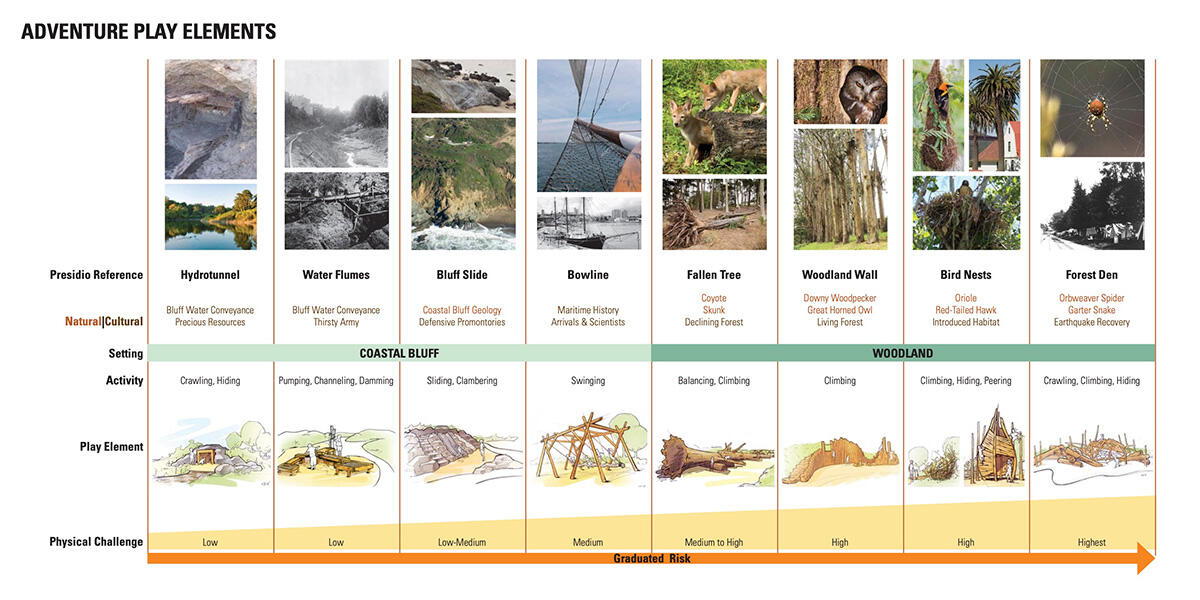
“Earthscape, our design-build firm for some of the bigger play structures, approached us about a very large white oak they had been tracking over many years on a farm close to their office,” said Rayes. “It was 250 years old, and it fell in a storm. They asked us, ‘Do you want us to do something with it?’ We said, ‘absolutely,’ so they took it and sliced it into three segments. They were able to core through the root flare to make a coyote den-like tunnel and did everything that was necessary to make it safe.”
A dedicated construction team began hauling in an assortment of natural materials to build the structures—massive boulders, smoothed out tree-limbs, and eucalyptus trunks salvaged from around the Presidio. Plants arrived from the Parks Conservancy’s Presidio Native Plant Nursery and were planted in between the structures and along the boundaries of the play area.
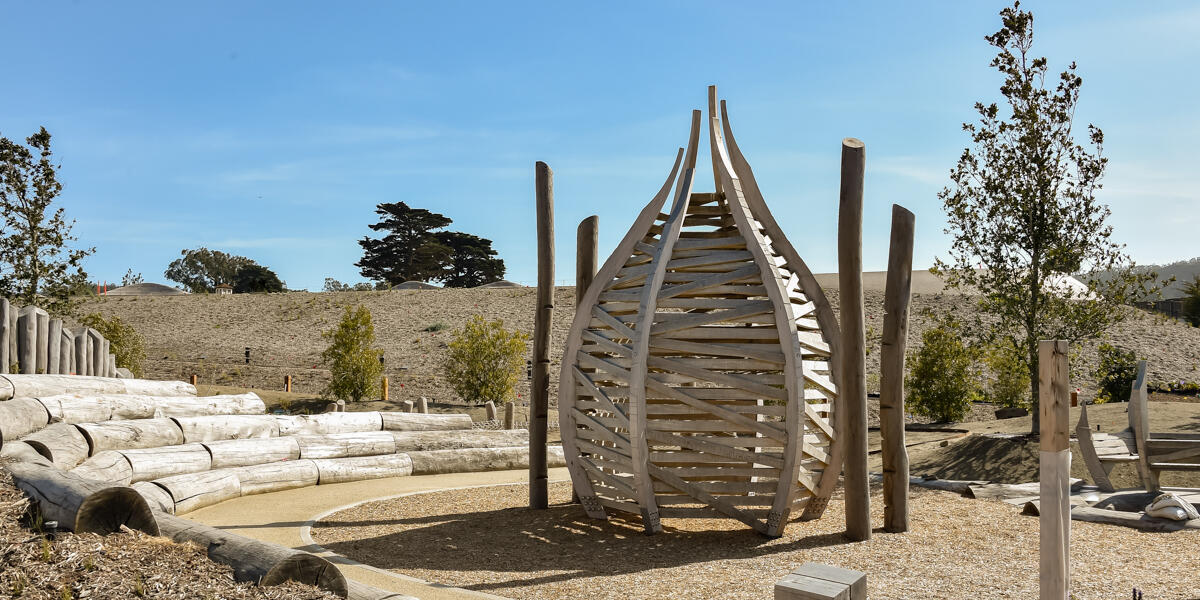
The view from the top of the “Oriole Nest” in the now completed playscape reveals a surrounding biodiverse landscape that flows with ease into the native plants and organic structures rising from the grounds of the Outpost. Orioles build their nests with a hole at the top, which inspired designers to create a similar structure that can also be accessed from the bottom by kids with varying ability levels.
As you wander from east to west along the Outpost’s pathways, you may notice that the activities increase in difficulty.
“The benefit of risk is an important topic internationally. The idea is that in order to promote lifelong health and skill-building, you need to have direct experience," said Sharon Danks, an Environmental Planner, CEO of Green Schoolyards America, and thought partner for the Outpost. "Some things you can only learn from experience—such as balance, judgment, and resilience. Kids need a chance to make small mistakes so that they will learn from those mistakes. Allowing for graduated risk lets kids build skills safely."
A climbable, swingable, and slidable miniature skyline stretches across the southern side of the playscape for those seeking physical fun and adventure. For the creators, a series of nooks along the northern edge are filled with unfixed materials for building, art, and science.
Designers went to great lengths to give every element in this mosaic of activities a connection to the Presidio, a particular level of difficulty, intriguing texture and form. However, their greatest challenge may have been designing room for the unknown and unexpected in each of these features. Room for youth of all ages to imagine their own storyline in nature without pre-determined outcomes.
The Outpost was built by the Partnership for the Presidio: the Parks Conservancy, Presidio Trust, and National Park Service. James Corner Field Operations served as the overall designer. Earthscape, in collaboration with JCFO on design, built many of the play structures.
Presidio Tunnel Tops is a free, 14-acre national park experience situated atop the Presidio Parkway tunnels, connecting Crissy Field to the Main Post of the Presidio with spectacular views, welcoming spaces for friends and family, and lots of things to do. Presidio Tunnel Tops was built by the community, for the community, and we're grateful to the donors and Parks Conservancy members who helped bring this vision to life, along with the Partnership for the Presidio: the Parks Conservancy, Presidio Trust, and National Park Service. Learn more about Presidio Tunnel Tops.
